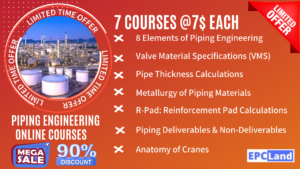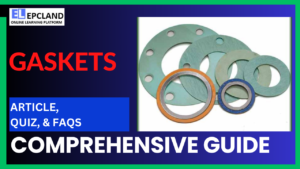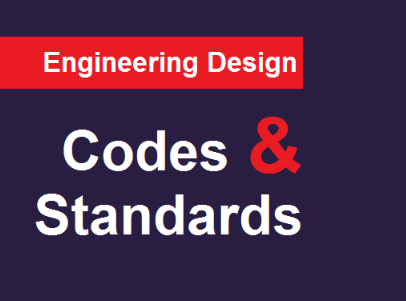
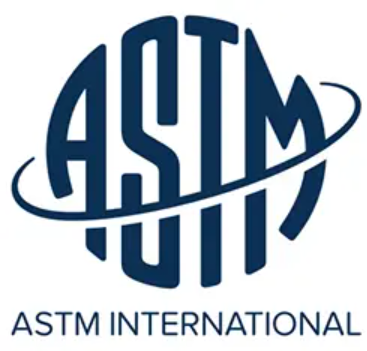
1. Purpose of E1106-12 Standard
What is the primary purpose of ASTM Standard E1106-12?
Explanation: ASTM Standard E1106-12 focuses on the primary calibration of Acoustic Emission Sensors to ensure accuracy and consistency.
2. Application of E2191/E2191M Standard
Which application is addressed by ASTM Standard E2191/E2191M?
Explanation: ASTM Standard E2191/E2191M addresses the examination of gas-filled filament-wound composite pressure vessels.
3. Purpose of E1211/E1211M Standard
What is the purpose of ASTM Standard E1211/E1211M?
Explanation: ASTM Standard E1211/E1211M is about leak detection and location using surface-mounted Acoustic Emission Sensors.
4. NDT Method for Radiology (X and Gamma) Method
Which nondestructive testing method is associated with Radiology (X and Gamma) according to the provided information?
Explanation: Radiology (X and Gamma) Method is associated with evaluating internal structures and detecting flaws using X-rays or gamma rays.
5. Benefit of ASTM Nondestructive Testing Standards
What benefit is highlighted by employing ASTM Nondestructive Testing Standards?
Explanation: ASTM Nondestructive Testing Standards enhance safety by eliminating the need for destructive testing, minimizing material failure risks during inspection.
6. Role of NDT Methods
What role do NDT methods play in quality control?
Explanation: NDT methods play a crucial role in enhancing product quality and reliability through early defect detection, contributing to improved quality control.
7. Preventing Equipment Failures
How does NDT contribute to preventing equipment failures and production delays?
Explanation: NDT contributes to preventing equipment failures and production delays by identifying potential issues before they escalate, allowing for timely corrective actions.
25+ Relevant topics on Codes & Standards
Short Article on Codes & Standards

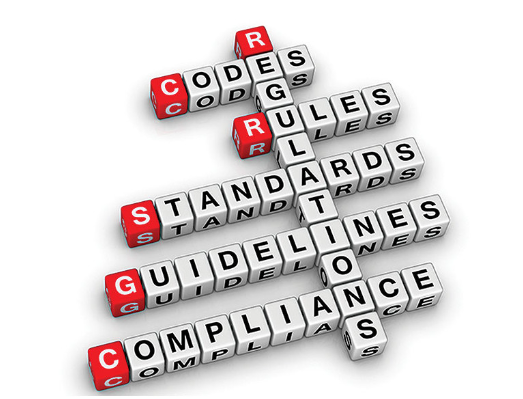
ASTM Nondestructive Testing Standards
Maintaining the integrity of materials and objects is crucial across various industries, from aerospace and energy to construction and manufacturing. This is where ASTM Standards for Non-Destructive Testing (NDT) come into play. These standards offer valuable guidance on safe and effective methods for evaluating materials without causing damage, allowing for timely detection of defects and ensuring their suitability for intended use.
A Closer Look at Acoustic Emission Methods:
This segment highlights the diverse range of standards within the NDT spectrum, focusing on Acoustic Emission (AE) techniques. The table below provides a comprehensive overview of key AE standards:
| Standard | Description | Applications |
|---|---|---|
| E1106-12 | Primary Calibration of Acoustic Emission Sensors | Ensuring sensor accuracy and consistency |
| E2191/E2191M | Examination of Gas-Filled Filament-Wound Composite Pressure Vessels | Identifying cracks, delamination, and other defects in composite vessels |
| E650/E650M | Mounting Piezoelectric Acoustic Emission Sensors | Proper sensor placement for optimal signal detection |
| E1139/E1139M | Continuous Monitoring of Acoustic Emission from Metal Pressure Boundaries | Evaluating the health of pressurized metal structures in real-time |
| E1888/E1888M | Acoustic Emission Examination of Pressurized Containers Made of Fiberglass Reinforced Plastic with Balsa Wood Cores | Inspecting FRP tanks and vessels for internal damage |
| E1495/E1495M | Acousto-Ultrasonic Assessment of Composites, Laminates, and Bonded Joints | Investigating flaws in composite materials through combined acoustic and ultrasonic techniques |
| E1211/E1211M | Leak Detection and Location Using Surface-Mounted Acoustic Emission Sensors | Pinpointing leaks in pipelines, tanks, and other structures |
| E1930/E1930M | Examination of Liquid-Filled Atmospheric and Low-Pressure Metal Storage Tanks Using Acoustic Emission | Monitoring the condition of metal storage tanks to prevent failures |
| E2863 | Acoustic Emission Examination of Welded Steel Sphere Pressure Vessels Using Thermal Pressurization | Identifying cracks and other defects in welded steel spheres |
| E1067/E1067M | Acoustic Emission Examination of Fiberglass Reinforced Plastic Resin (FRP) Tanks/Vessels | Assessing the integrity of FRP tanks and vessels |
Beyond Acoustic Emission:
The world of ASTM NDT standards extends far beyond Acoustic Emission. The table below offers a glimpse into other crucial NDT methods addressed by these standards:
| Part | NDT Method | Applications |
|---|---|---|
| 2 | Digital Imaging and Communication in Nondestructive Evaluation (DICONDE) | Managing and sharing NDT data efficiently |
| 3 | Electromagnetic Method | Detecting cracks, surface and subsurface flaws in conductive materials |
| 4 | Leak Testing Method + Liquid Penetrant and Magnetic Particle Methods | Identifying leaks in pressurized systems and visualizing surface discontinuities |
| 5 | Nondestructive Testing Agencies + Radiology (Neutron) Method | Assessing internal characteristics of materials using neutron radiation |
| 6 | Radiology (X and Gamma) Method | Evaluating internal structures and detecting flaws using X-rays or gamma rays |
| 7 | Reference Radiological Images | Providing benchmarks for interpreting radiographic images |
| 8 | Specialized NDT Methods | Covering specialized techniques like thermography, vibroacoustics, and guided waves |
| 9 | Ultrasonic Method | Analyzing material properties and detecting internal flaws using sound waves |
The Value of ASTM Nondestructive Testing Standards:
By employing these comprehensive standards, laboratories and industries gain invaluable benefits:
- Enhanced Safety: NDT techniques eliminate the need for destructive testing, minimizing risks associated with material failure during inspection.
- Improved Quality Control: Early detection of defects allows for timely corrective actions, enhancing product quality and reliability.
- Reduced Costs: NDT helps prevent costly equipment failures and production delays by identifying potential issues before they escalate.
- Optimized Performance: Understanding material properties and internal structures enables optimized design and operation of equipment and structures.
Conclusion:
ASTM Nondestructive Testing Standards play a critical role in safeguarding material integrity across various sectors. By promoting safe and effective techniques for evaluating materials without causing damage, these standards contribute to enhanced safety, improved quality control, cost savings, and optimized performance in countless applications.
Table of Contents
Don’t miss the Course on Effective Isometrics Management: Check Now
Enrollment Link
Recommended courses (Published on EPCLand)
- Complete Course on Piping Engineering
- Basics of Piping Engineering
- Piping Layout Engineering
- Piping Material Engineering
- Piping Stress Analysis
- Material Requisitions
- Piping Material Specifications
- Valve Material Specifications
- Plant Design & Layouts-OISD 118
- Isometric Management
Library of Technical Articles
Don’t miss out the collection of 15+ articles on following topics:
- Basics of Oil and Gas Industry
- Valves
- Testing
- Tank
- Piping Bulk Items
- Pipe
- Metallurgy
- Piping Materials
- Layout
- Instrumentation
- Heat Exchanger
- Type of Contracts
- Codes and Standards
- ASTM Standards
- Articles on Piping Specialty Items
Video details of Complete Course on Piping Engineering
Why Enroll in the EPCLand
Proven Track Record– PTR
Activities & Achievements before launching EPCLand
- Published more than 50+ short courses
- 3000+ Enrolments
- More than 3,500,00 Minutes of watch hours in the last 2 years
- 4000+ Students in 100+ Countries
- Rating of 4+ out of 5
- 1000+ YouTube Videos
- 8K+ Subscribers
What Students will Learn
- Codes & Standards of the Energy Sector
- Piping Material Engineering
- Piping Layout Engineering
- Stress Analysis
Interesting facts
- All the published courses have been developed by Industry Experts with more than 2 decades of experience
- Content is based on Practical experience and real-time problems.
- Content is designed and organized in such a manner that it can be easily grabbed.
- Complete website, Blogs and Quiz sections are Planned, Designed and published by myself (About me: Atul Singla)
- Complete flexibility of Time & Location, Students can access the content from anywhere & anytime
- Moreover, once enrolled, the content can be access as many times as you want, which helps in understand the fundamentals in a better way.
Conclusion
In conclusion, our courses are meticulously crafted by industry experts with over two decades of hands-on experience. The content is rooted in practical knowledge, addressing real-time problems. The material is thoughtfully designed and organized for easy comprehension. Every aspect, from the website to blogs and quizzes, has been planned, designed, and executed by Atul Singla, ensuring a comprehensive and seamless learning experience. With the flexibility of accessing the content at any time and from any location, students have the freedom to learn on their terms. Furthermore, enrollment grants unlimited access, allowing learners to revisit the material as often as needed, fostering a deep understanding of the fundamentals.

